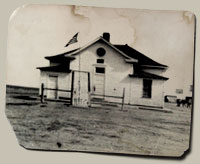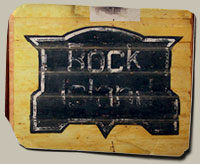Second Central School Museum
Flagler, Colorado
In 1915, rural school patrons living south of Flagler, Colorado broke away from the “one-room school” tradition when they constructed the Second Central School building.
The school included two main-floor classrooms, divided by an accordion wall, which could be opened to make a single large space, and a full basement used for high school classes.
Later additions were built for teacher housing and to enclose the basement entrance.
Second Central School Museum
404 Fourth Street, Flagler, CO 80815
Open by appointment 719-765-4603
 For 30 years, students of Polish, German, Irish and other ethnic decent were educated here, as many as 80 students at a time. The building was also used by church congregations and community members for worship services and special gatherings.
For 30 years, students of Polish, German, Irish and other ethnic decent were educated here, as many as 80 students at a time. The building was also used by church congregations and community members for worship services and special gatherings.
After World War II, the number of farm families declined and rural schools were consolidated. The Second Central School was left vacant for the next 40 years, falling victim to the weather, thieves and vandals.
However, Second Central students and teachers never forgot what the school meant to them. In 1984, the Flagler Historical Society was formed to preserve and restore the building. In 1993, the school was relocated to Flagler.
Lyle Stone, Flagler historian, fund-raiser, restoration laborer and Second Central School alumnus, continues to gather and display artifacts and photographs that preserve the area’s history for coming generations. Among the exhibits is a piece of the wall from the first Rock Island Railroad depot building in Flagler, with its original paint intact.
The building retains its old school feel, thanks to authentic desks, a drinking water crock, a chalkboard which still displays the alphabet, a picture of George Washington, and artifacts salvaged from other rural schools in the area. Visitors will be delighted by the spiral brick chimney built by Lyle Stone’s grandfather and the reproduction of a bronze plaque presented to this “superior school” by the State of Colorado in 1917.
Behind the building you’ll see a renovated windmill and tower, placed there as a memorial by the Fager family. They are a fitting tribute to this rural landmark.
